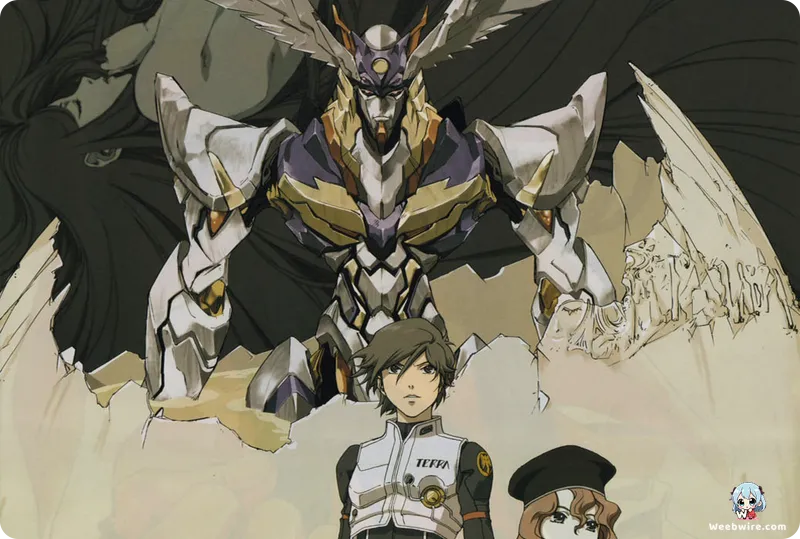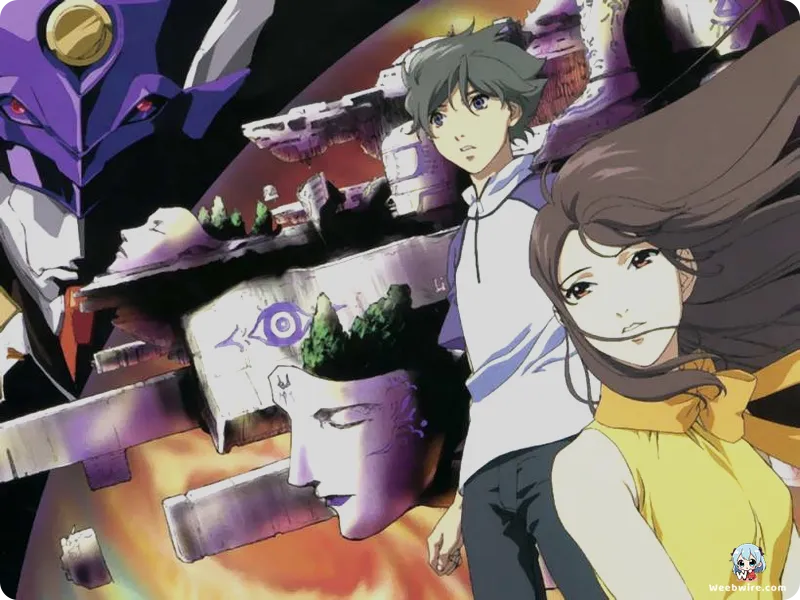Decoding RahXephon: How Studio Bones and Director Yutaka Izubuchi Tuned Mythology and Opera into a Landmark Sci-Fi Masterpiece

Launched in 2002, the seminal psychological mecha series RahXephon, a flagship title from the then emerging Studio Bones, rapidly established itself as a benchmark for high concept existential science fiction. While it shares thematic echoes with earlier giant robot narratives, RahXephon carved out its own unique space through deeply layered mythology, unparalleled world building, and an extraordinary integration of orchestral and operatic music that functions as a core plot mechanic.
A closer examination of its creation reveals fascinating insights into how director Yutaka Izubuchi leveraged his background to craft a story designed to stand distinctly apart from its contemporaries.
The Director's Vision: From Designer to Auteur
Izubuchi’s journey to the director’s chair is perhaps the most critical piece of production trivia. Renowned across the industry primarily as a master mechanical designer, with credits spanning iconic franchises like Mobile Suit Gundam and Patlabor, his directorial debut with the 26 episode series marked a pivotal career inflection point. This design expertise is visibly embedded in the series, lending immense sophistication to the titular RahXephon unit and the adversarial Dolem mecha.
More importantly, Izubuchi approached the complex psychological drama with an engineer's precision, aiming for a structured narrative and, notably, a clear, definitive conclusion. This was a subtle yet pointed contrast to the trend of ambiguous endings prevalent in similar psychological anime of that era. His meticulous vision ensured that the emotional weight of the story, set within the enigmatic Tokyo Jupiter, was never overshadowed by the visual spectacle.
Synthesized Mythology and Linguistic Depth
The very nomenclature of the series, RahXephon, is a masterclass in synthesized linguistic mythology. The title intentionally fuses 'Rah' (the ancient Egyptian deity of creation and light), 'Phon' (Greek for 'sound' or 'voice'), and 'Xe' (possibly referencing the stable element Xenon). This emphasis on sound is central to the entire concept: the RahXephon is not merely a weapon, but a reality altering instrument.

Protagonist Ayato Kamina is designated the 'Ollin,' or 'Tuner,' whose destiny involves 'tuning the world' through music. This concept is rooted in Aztec mythology, where Ollin represents movement, creation, and destruction cycles. Furthermore, the antagonistic Mulians derive their name from the mythical lost continent of Mu, often associated with spiritual enlightenment, ensuring that every character and element, including the massive Golem inspired Dollum, carries significant symbolic depth.
Yoko Kanno's Operatic Score
The series is equally celebrated for its ambitious musical architecture, orchestrated by the legendary composer Yoko Kanno, known for Cowboy Bebop. Kanno delivered a magnificent score heavily influenced by classical opera, an unusual choice that transforms the mecha genre. The iconic opening theme, 'Hemisphere' by Maaya Sakamoto, is just the beginning.
The true genius lies in the integrated fictional opera, 'Viri di Mú.' This opera transcends background noise; it serves as the literal language of the Mulians and the mechanism for the world's 'tuning.' The lyrics, sung in a fictional tongue, function as a meta commentary, mirroring the characters' existential crises and deepening the plot.
The Dual Reality of Pluralitas Temporalis
Finally, the relationship between the original TV series and the subsequent film, RahXephon: Pluralitas Temporalis, provides a compelling dual interpretation of the central romance between Ayato and Haruka. Far from being a simple recap, the movie serves as a deliberate alternative 'tuning' of the narrative. It shifts key plot elements, focusing almost exclusively on their relationship and offering a dramatically cleaner, more focused romantic resolution compared to the TV series’ complex, sacrifice laden temporal mechanics.
Izubuchi explicitly intended the film to be viewed as a parallel reality, giving dedicated fans the choice of which conclusion they preferred, thereby reinforcing the central theme of choice and destiny that defines this landmark work from Studio Bones.
Credits
RahXephon
Author
Yutaka Izubuchi
Cover Art
Akihiro Yamada
Studio
Bones
Publisher
Bandai Visual
Producers





